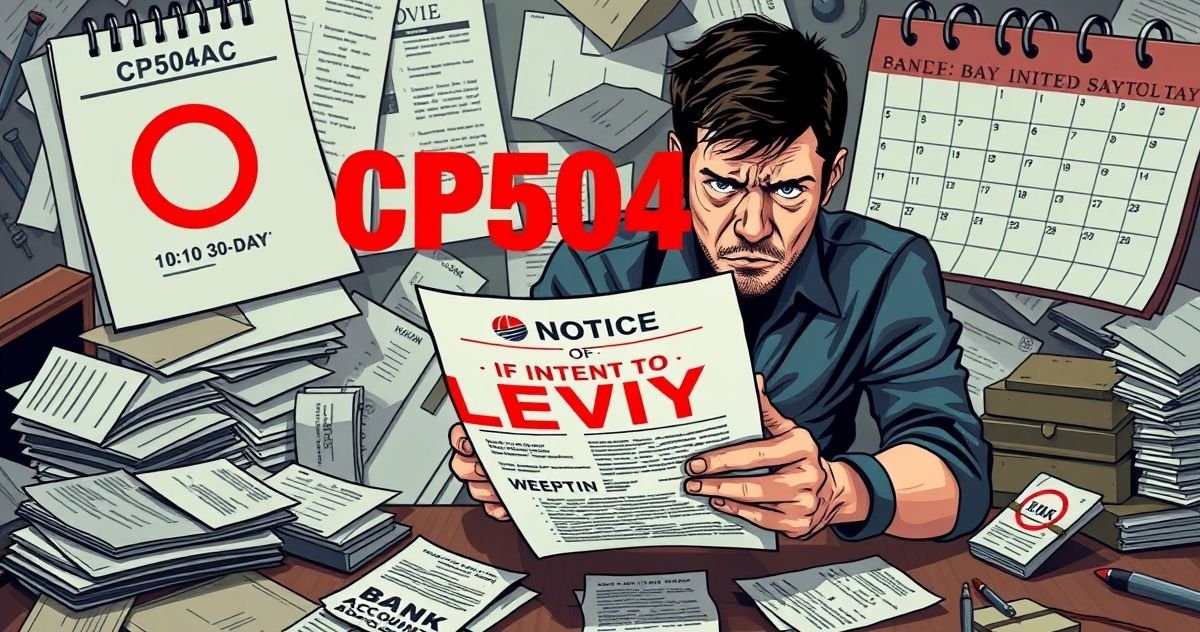Understanding the CP504AC Notice
The CP504AC Notice is a formal communication from the Internal Revenue Service (IRS) directed to taxpayers. The notice serves a critical role in the tax collection process by alerting individuals or businesses of unpaid taxes and the potential for enforced collection actions if the liability remains unresolved. This notice signifies that prior communications addressing the tax debt have not resulted in the necessary payment.
Primary Purpose of the CP504AC Notice
The CP504AC Notice is officially titled a “Notice of Intent to Levy” and is designed to prompt taxpayers to take immediate action on their overdue tax debts. Its primary purpose is to warn that if no payment or response is forthcoming, the IRS may initiate stringent collection procedures such as levying bank accounts, garnishing wages, or placing a federal tax lien on properties owned by the taxpayer.
Key Features of the CP504AC Notice
- Official Demand for Payment: The notice explicitly requests that the taxpayer remit the indicated tax amount. This demand is not negotiable and requires prompt attention.
- Explanation of Debt: The CP504AC outlines the tax year(s) in question, the total amount owed, including any interest and penalties, and details of prior attempts at contact and collection.
- Impending Levy Actions: Through this notice, the IRS communicates the possibility of enforced collection procedures, including garnishing wages or levying financial accounts, should the debt remain unsettled.
Compliance and Filing Requirements
Upon receipt of the CP504AC Notice, taxpayers have a window of time, typically 30 days, to respond or address the tax debt. During this period, individuals must either pay the outstanding taxes or contact the IRS to arrange an alternative payment agreement, such as an installment plan. Ignoring this notice can lead to severe financial and legal difficulties.
The notice also advises the taxpayer of the right to a Collection Due Process (CDP) hearing, offering an opportunity to contest the levy or lien. It is crucial to understand and act on these rights promptly to avoid further complications.
Penalties and Consequences for Non-Compliance
Failure to respond to the CP504AC Notice invokes several potential penalties and enforced actions, including:
- Federal Tax Lien: A lien could be filed against the taxpayer’s property, making it challenging to sell or refinance any assets.
- Bank Account Levy: If a levy is executed, funds from the taxpayer’s bank accounts can be seized.
- Wage Garnishment: The IRS has the authority to garnish wages, redirecting a portion of earnings to cover the tax debt.
- Increased Financial Costs: Interest and additional penalties will continue to accrue on the unresolved debt.
Significance in Tax Resolution and Financial Compliance
Understanding and effectively managing a CP504AC Notice is vital for maintaining financial stability and compliance. This notice is often a final warning, providing a critical opportunity for taxpayers to address their outstanding obligations before more disruptive measures are enacted.
Actively resolving the issues highlighted in a CP504AC can help taxpayers in multiple ways:
- Minimizing Penalties: Prompt payment can reduce or eliminate further penalties or interest charges.
- Protecting Assets: By acting on the notice, taxpayers can prevent enforced actions from affecting personal or business property and financial accounts.
- Preserving Financial Reputation: Addressing tax debts proactively keeps credit health intact and avoids public liens.
- Avoiding Legal Complications: Compliance with IRS requirements prevents additional legal proceedings.
In conclusion, the CP504AC Notice represents a serious stage in the tax collection process. It is imperative for recipients to understand its implications fully and to take immediate steps toward resolving their tax obligations. By doing so, they protect their financial well-being and ensure compliance with federal tax laws.

